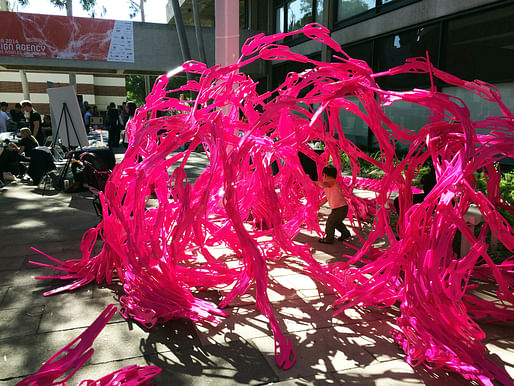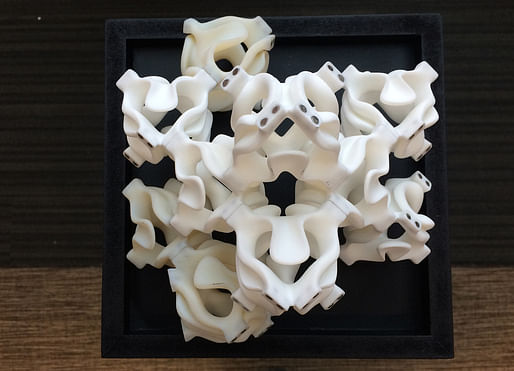

Proof of concept, experiments, process, a shot in the dark. The Acadia Conference of 2014 started off sounding more like a science conference than a forum for cutting edge architectural exploration. Topics such as walls, threshold, corner, access, and sketching were far from the main topics of exploration; instead something else had taken hold.
Reality, our movements, our ideas, they were formulated and described with symbols, numbers and variables more at home in a calculus class. It presents a new lens to see architecture through, a way to view it from a place where the designer did not feel the burden of immediate complete authorship; but inviting them into a system that already had its own qualities, ones to question and react to, a modern day mathematical rorschach. Architecture has been in flux, moving with extreme haste in multiple directions, from formal discovery, mathematical testing, materials exploration and so forth.

Acadia 2014 is our chance to engage into one of the branches of architecture’s proliferation into the heightened digital realm. The conference is split into discussion sessions, featuring panelists who started each discussion with individual presentations. The session's presenters would then reconvene to discuss common topics and goals in their work.
Thursday's morning session attempted to understand what the role of information, math, and agency in architecture could be; each pushing architecture’s limits along that trajectory. Techniques shown were pointed at varied fields of interest; flowing from urban to circulation, and from building to nano printing, and from user to author. Sources of information such as big data, flows, swarms, game theory, chaos theory, patterns, choice, and authorship were all mined for their potential. Each presentation tackled either iteration or optimization through a series of studies that flowed quickly from the urban to human scale, including topics such as buildings skins, circulation diagramming, and material testing.

Joshua Taron (Bounded Agency) spoke of multi agent systems, presenting the ability to work towards infinite iterations. Rene Puusepp, in his talk "Agent Based Models for Computing Circulation", discussed circulation as nodes of behavior that explore various scales of optimized movement. Each of these allowed for the informing, not controlling, of the design process. Rodrigo Shiordia was able to present how iterations of voxel-based control could allow us to extend object capacities, and find potential in the systems by assigning material, color, and or behaviors uniquely across a system.
Mark Ericson (Woodbury University and Euclid’s Wedge) saw the potential in extending drawing’s ability to represent the aesthetics and feasibility of the forms that are produced, through the generative process that generative algorithms produce – using architectural tools to break down and create data used for constructing such things.
During the afternoon's sessions, Claudia Otten and Jose Sanchez closed out the day’s presentations with a great example of how we can start to force these ideas into architecture, to test the waters. Claudia’s “Everyone is an Architect”, and Jose’s “Polyomino” both reconsidered serial repetition in combinatorics, and were able to bring the user into the equation. They proposed a sense of childlike playfulness, novelty into the equation, a sense of discovery. This platform seemed to bring many of the conference’s ideas to a level that could engage an audience beyond those attending.

Here authorship and its role in the generative process was forced into the limelight. When do you hit stop? When do you hit go? How do you quantify if one is better than the next? Is that when the architect comes in? These questions were continuously tackled through these explorations. The idea of judgement, decision and quality in form were at the forefront for the panels.
Throughout the day, Architecture with a capital “A” seemed to be sitting on the wayside, waiting to be invited to the conversation. But within this context, without the burden of such a large responsibility, architecture could come back in slowly, with delightful results.
Architecture had long allowed the Digital realm to run free, showboating, not forcing it to answer its many unanswered questions; until now. “Digital Architecture” has grown out of its rebellious years and matured into a system that puts aesthetics, choice, and authorship into the mix. It has come to appreciate constraints, restrictions and choice. The Acadia conference and panels expose these advances, these bleedings into the common fray and the expanding realm of influence for the trajectories to be able to absorb, crossbreed and learn from other trajectories within and outside of Architecture.
No Comments
Block this user
Are you sure you want to block this user and hide all related comments throughout the site?
Archinect
This is your first comment on Archinect. Your comment will be visible once approved.